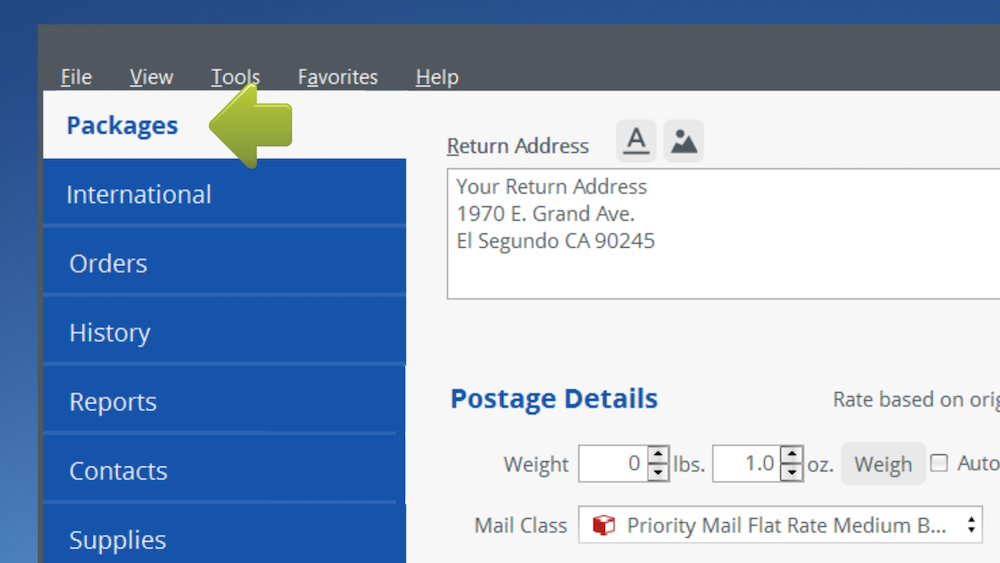
- ENDICIA PRIORITY MAIL TRACKING CODE
- ENDICIA PRIORITY MAIL TRACKING PC
- ENDICIA PRIORITY MAIL TRACKING ZIP
Figure 4 is an example of a Registered Mail label with a new red Label 200N which is similar to the old Label 200 which carries its own barcode. In the transitional period, USPS is creating colored labels representing the various special services but without any special barcodes. In the future, you will likely see these colors disappear as the impact of the IMpb becomes more pronounced inside USPS operations.
These colors help the USPS operational staff identify pieces that need special handling. USPS special services are often indicated by colored labels. This unification is depicted conceptually in Figure 3.įigure 3: The IMpB Eliminates the Need for Old-Style Special Service Barcodes But with IMpb, these services can be represented with a single barcode which also provides the tracking function. If you’ve ever done COD, Certified Mai, Insured, or Registered Mail, you know that each of these services use a distinct barcode. You can now read and understand the domestic tracking barcodes!įigure 2: Priority Mail Label with STC of 055 Consolidating Legacy USPS Barcodes into the IMpbĪ major benefit of this 3 digit STC is that USPS can reduce the number of barcodes on a package or mail piece. So, you may see tracking numbers “re-used” but always with a gap of at least 6 months. Our goal with domestic tracking numbers is to maintain uniqueness for at least 6 months. With a 9-digit MID, you can generate up to 100,000 unique tracking numbers (and this is the situation where we use the “15” for a source identifier). These MID’s are usually 9 digits in length. Some of our customers have been assigned their own MID by the USPS, and, for those customers, we generate barcodes using their MID. When using a 6-digit MID, we employ the 10 for the source identifier and we can generate up to 100 million unique tracking numbers. Because our loyal Endicia customers create millions of barcodes per day, we were given several special 6-digit MID’s (the one shown is the example barcode is 200793). MID's are assigned by the USPS to identify the originator of the barcode.
ENDICIA PRIORITY MAIL TRACKING PC
The number 10 uniquely identifies Endicia as the PC Postage provider. The next two digits are a source identifier.
ENDICIA PRIORITY MAIL TRACKING CODE
So, the new 3-digit Service Type Code (STC) encapsulates the mail class and any and all extra services. There is another service code for First-Class Mail with Delivery Confirmation and Restricted Delivery. For instance, there is a different service code for a Priority Mail package with Delivery Confirmation and insurance. They essentially cover all possible permutations of USPS services. There are hundreds of possible service codes. The USPS has a published list of service codes in USPS Publication 199. Prior barcodes had a 2-digit service code-the IMpb adds one more digit. Next is a very important 3-digit "service code". The next two digits are always a 94, which means that this label was created by a PC Postage vendor. So you see that the IMpb barcode actually combines routing and tracking!

The prefix is use to route the package in the USPS main plants. You don’t actually see these two numbers in the human readable data below the barcode (see Figure 2), but they are part of the barcode itself.
ENDICIA PRIORITY MAIL TRACKING ZIP
The barcode begins with a “420” followed by the 5 digit ZIP of the destination. Let's look at the new barcode structure shown in Figure 1. In contrast, tracking numbers on USPS international packages have not changed as their format is defined for all the Post’s worldwide by the Universal Postal Union in Bern Switzerland.

Gone is the old alphanumeric "EO123456789US" Express Mail format-so that is a very noticeable change. For domestic Priority Express Mail users, you will notice that the IMpb tracking number looks identical to the Delivery Confirmation barcode seen on other mail classes. If you had been using Delivery Confirmation in the past, the new barcodes look pretty much like the old ones, but the data payload has changed. With the Janurelease of our Endicia software, we began using a new USPS barcode protocol called Intelligent Mail Parcel Barcode or IMpb, for short. USPS Tracking Barcode and Label Changes Introduction


 0 kommentar(er)
0 kommentar(er)
